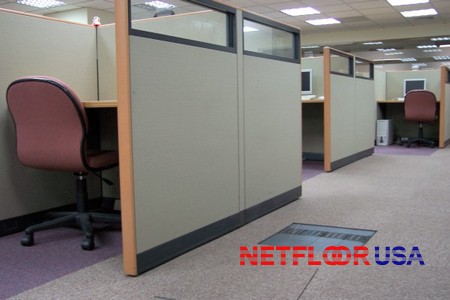Decades old data center technology may soon be replaced by a new generation of electrical (and data) cable systems. This will provide many benefits to all stakeholders: End user, facility managers, architects, contractors, IT Managers, technicians and building occupants.
While 4G, 5G and WiFi technologies get most of the public's attention, these are not the technologies that form the backbone of the Internet. Nor are they the technologies that form the infrastructure for today's high-tech, connected learning and working spaces.
Until recently, if you were talking about network infrastructure NOT in a data center, your conversation was limited to hack-prone WiFi and some Cat 5e cables hastily run through office walls (or perhaps lying on the floor due to renovations).
The physical infrastructure for a high-tech, wired and connected space was simply not possible.
As big data loomed on the horizon, and workers began video conferencing and sharing huge files on a regular basis, it became evident that there were very few buildings that could handle the demands of the information worker.
And, let's be clear, this is not simply limited to office workers, or some small niche of specialty workers like video producers. Nearly everyone works with large files, has a need to video conference, stream HD video these days, whether they are a student, in the workforce, or even for personal, at-home projects.
We all need more bandwidth, but we never had a way to access that in a secure, easily-deployed fashion.
Sure, you can buy a Gigabit wireless router for your office, but are you monitoring its use? Did you change the password? Are you excluding certain MAC addresses? How are you making sure no one is stealing your WiFi for nefarious purposes?
Oh, and I'm sure you set up your wireless router in the best physical location possible: in the absolute middle of your office, with no walls, doors, partitions or other obstructions that will slow down the signal to a crawl, right? (Be honest, you probably tucked the router in "the back" because that's where your ISP's Internet connection comes in, and you connected your wireless router to their modem using whatever random Cat5 cable you found lying around. No wonder the people on the second floor complain about bad Internet speeds!)
Low profile, cable management access floor takes a well-understood technology like access flooring, and shrinks it down to a mere 1.5". It also adds easy-to-use, plug and play electrical and data systems inside the floor.
No more slow WiFi. No more resetting the password because someone shared it with a guest. No more complaints of slow videos from workers or students who are sitting more than 50 feet from the router.


 Facebook
Facebook Twitter
Twitter Google+
Google+ LinkedIn
LinkedIn